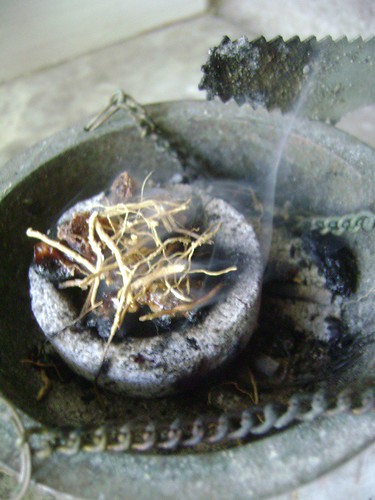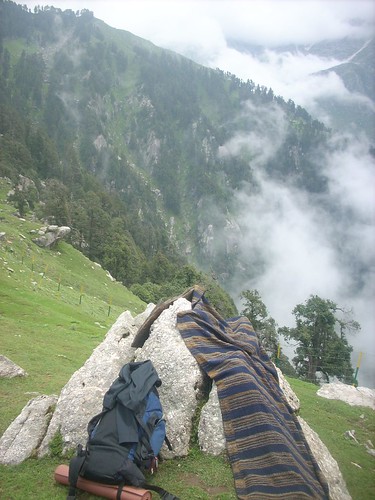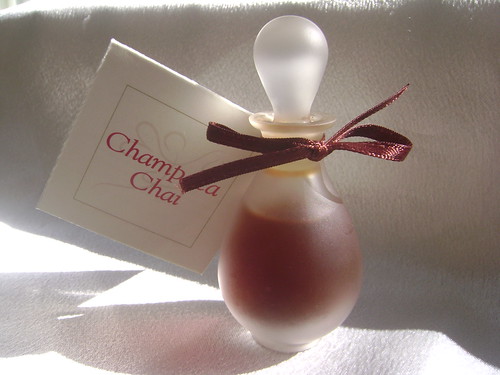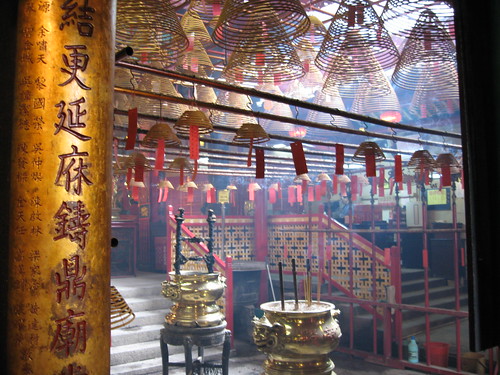
It's winter. The most glorious season in Canada, where the energy is directed indoors, and focuses on social gatherings large and small. As usual, I'm an outsider peeking into what this is all about from the viewpoint of a traveller passing by. For, like, 17 years.
I am looking forward to the quite and solitude that tomorrow brings. For someone who grew up in Israel, it's funny to see how once a year, Canadians are experiencing the only tight-lid closure of stores and services. The rare sight observed today - of long, hectic lineups at the supermarkets and grocery stores, the traffic congestion, etc. are a weekly sight in Israel, where every Friday families stock up for a full day (gasp!) without shopping... I find it amusing.
One of my favourite things this time of year is walking in the West End (my neighbourhood and home for my entire Canadian adventure) and coming across a waft of real, wood stove smoke. Am I the only human for whom the smell of pyrolysis stirs up strong emotions? I think not. It is at the same time a signal of danger in the forest, and the safety of the caveman's tribal bonfire. No other recent can conjure so immediately and powerfully the feeling of freedom, adventure and coziness. It transports me to cozy nights with my family by the fireplace, my home village burning in a bush fire, and more recently - bonfires when camping in my imaginary gypsy tribe or spice caravan.
Come wintertime, and few things please me more than immerse myself in fragrant smoke. And I'm not alone - incense, and in particular - frankincense and myrrh, from the desert trees which grow wild and are cultivated in
Southern Arabian peninsula and West Africa is a symbol of the Nativity Scene and is burnt in many Churches. Beginning with some basics, just straight-up burning of substances in their raw form, preferably on hot charcoals: white sage, leaves and twigs of redcedar, frankincense tears and sticks of palo santo (that tend to self-extiniguish repeatedly...). And then to some wonderful Egyptian Kyphi - a concoction that is my own modern spin on the ancient recipe. Although not accurate, it is done according to the technique and the scholarly deciphering of its original 16 ingredients. It may not be accurate, but I can attest to its fragrant heavenliness and ability to banish the worries of the day - which is what Kyphi is all about...
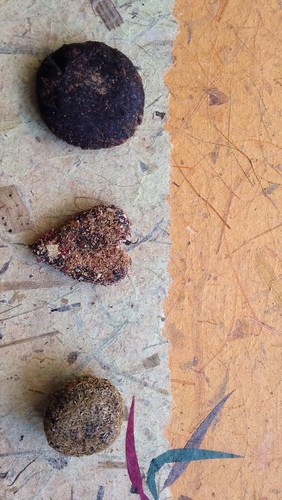
I've been blessed with wonderful incense friends, who generously send me their incense creations. Above you can see
Dabney Rose's version of Kyphi, in 3 different "flavours" (from top to bottom): Soliliguy, Févriér Amour and Winter Sleep (Conifer). They are made very differently from mine, which is granular and is meant to be sprinkled on the hot coal. Rather, after the ingredients have been pounded into a more-or-less uniform level, they've been shaped into little "candies", and one is meant to break off little pieces to place on the hot charcoal, or on a mica plate. Although the shapes are adorable, I am wondering about the extra work required both by the incense maker (who needs to put a ton of effort into each piece!), and the user - who needs to break off the piece from a very hard piece of re-bound resins. Perhaps I am missing something in the process or the technique. It sure would make for an interesting ritual if there was a special knife that would cut through these elegantly.
But what truly matters, more than shape or form, is the scent itself. And in deep winter Winter Sleep is a most befitting incense to burn. It's a wonderful way to celebrate Winter Solstice; and once the celebrations are over - to rejuvenate and counter the winter blues that tends to follow the over-partying or maybe just feeling left out after
The name is a bit misleading though: it's actually a great way to wake up from winter hibernation! The elegant incense candy smells like juniper, spruce needles and pinon pine, and it reminds me of a crisp winter walk in a snow-covered coniferous forest. When it's burning, I'm smelling primarily myrrh, but also the resinous coniferous notes and a sweet-balsamic after-note.
Another favourite of mine to burn at this time of year is
Ross Urrere's "
Ocean of Night" loose incense that look like kohl or charcoal with bits of woods and oakmoss strewn in. Ocean of Night is a rich, luxurious, ambery-balsamic yet floral blend that is very perfumey. It reminds me of the floral Russian and Greek Church incense, yet without the unpleasant synthetic aftertaste these have. It's like an incense version of
Nuit de Noël!
Curious to explore more incense-themed perfumes - check out my Christmas 2015 Newsletter:
Smouldering Incense Gift Guide.




